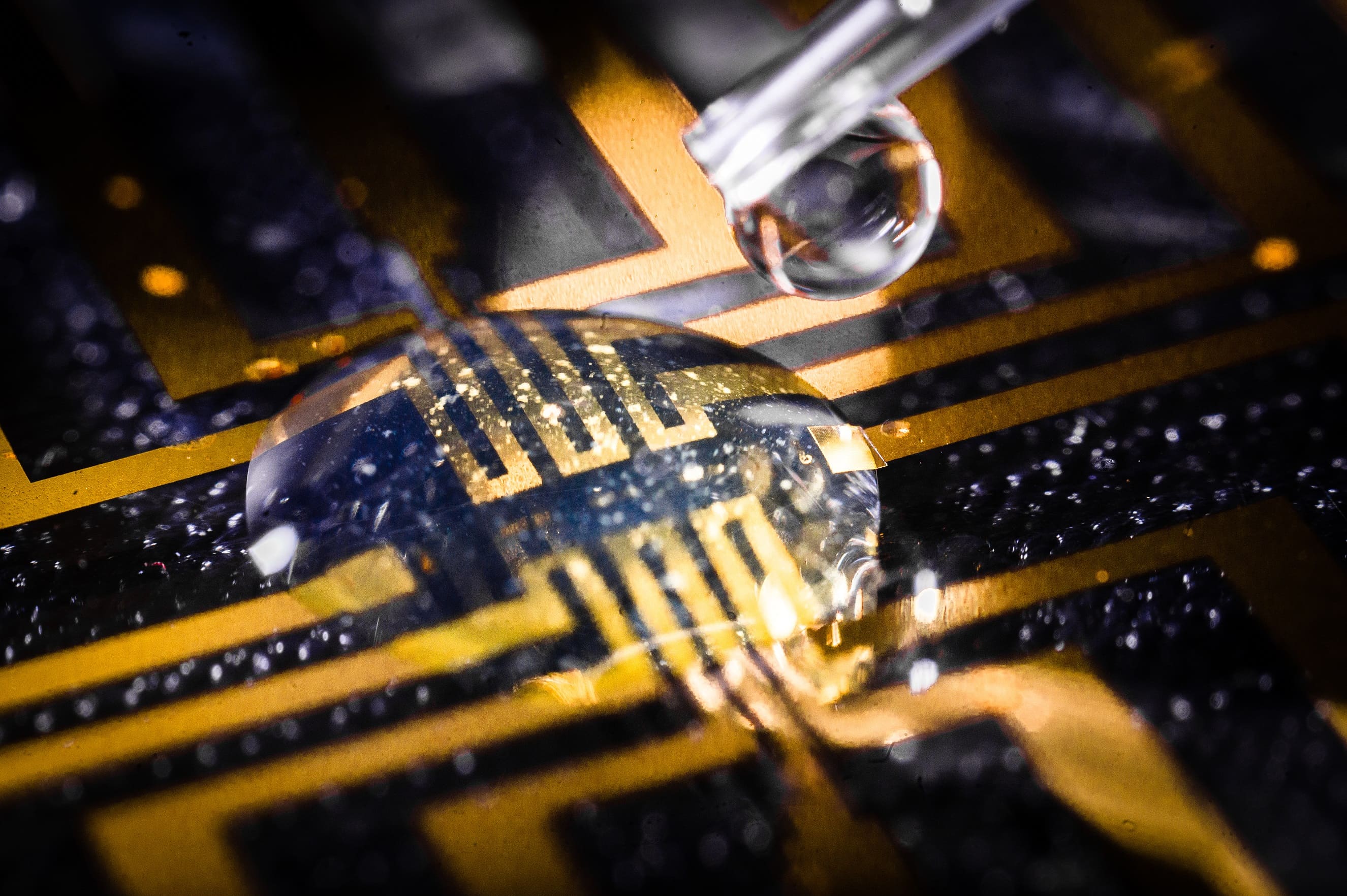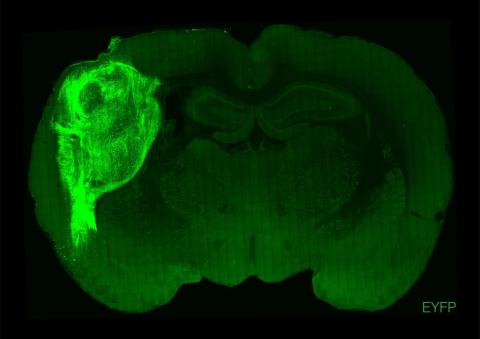Reaction to study demonstrating the formation of electrodes in living animal tissue
A Swedish research team has successfully 'grown' a soft, electrically conductive polymer in various zebrafish and leech tissues, as well as in isolated mammalian muscle tissues, without damaging those tissues. The research is published in Science.

The injectable gel is tested in a microfabricated circuit. Author: Thor Balkhed.
Tara Spires - electrodos tejidos EN
Tara Spires-Jones
Director of the Centre for Discovery Brain Sciences at the University of Edinburgh, Group Leader in the UK Dementia Research Institute, and Past President of the British Neuroscience Association
In this study by Berggren and colleagues in Sweden, scientists injected a cocktail of chemicals into the brain, heart, and tailfin of zebrafish and into the nervous systems of leeches. Using a clever system that takes advantage of biological properties of the tissue, these injected chemicals formed a gel in the animals that was capable of conducting electricity, a property useful for studying brain function.
Long term, authors speculate that this technology will facilitate the development of interfaces between electronics and biological systems. While this is very interesting scientifically and will no doubt spur further research, this study in zebrafish, leeches, and meats (the gel also formed in pork, beef, and chicken but not tofu) is a long way from integrating your mobile phone directly with your brain.
- Research article
- Peer reviewed
- Experimental study
- Animals


